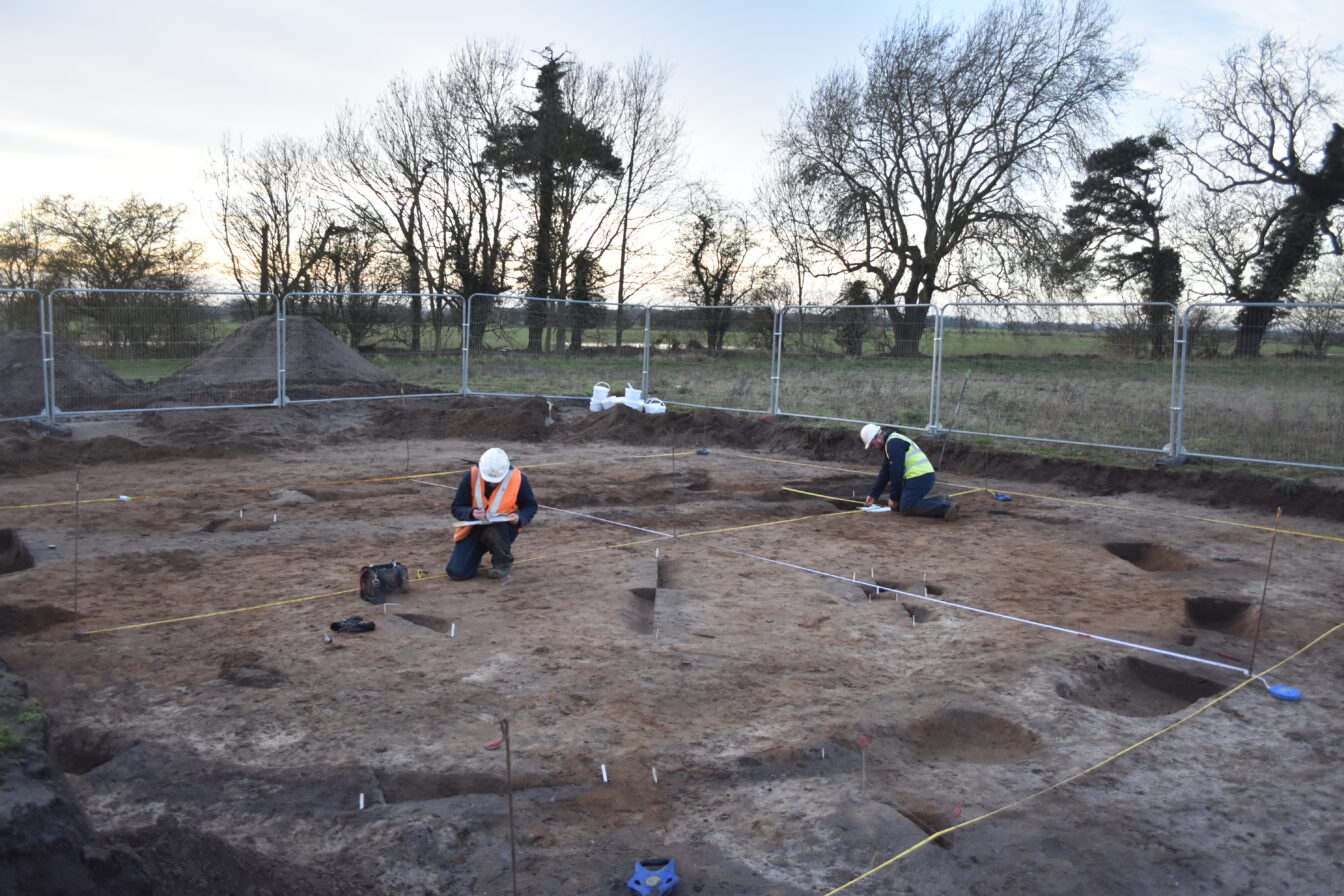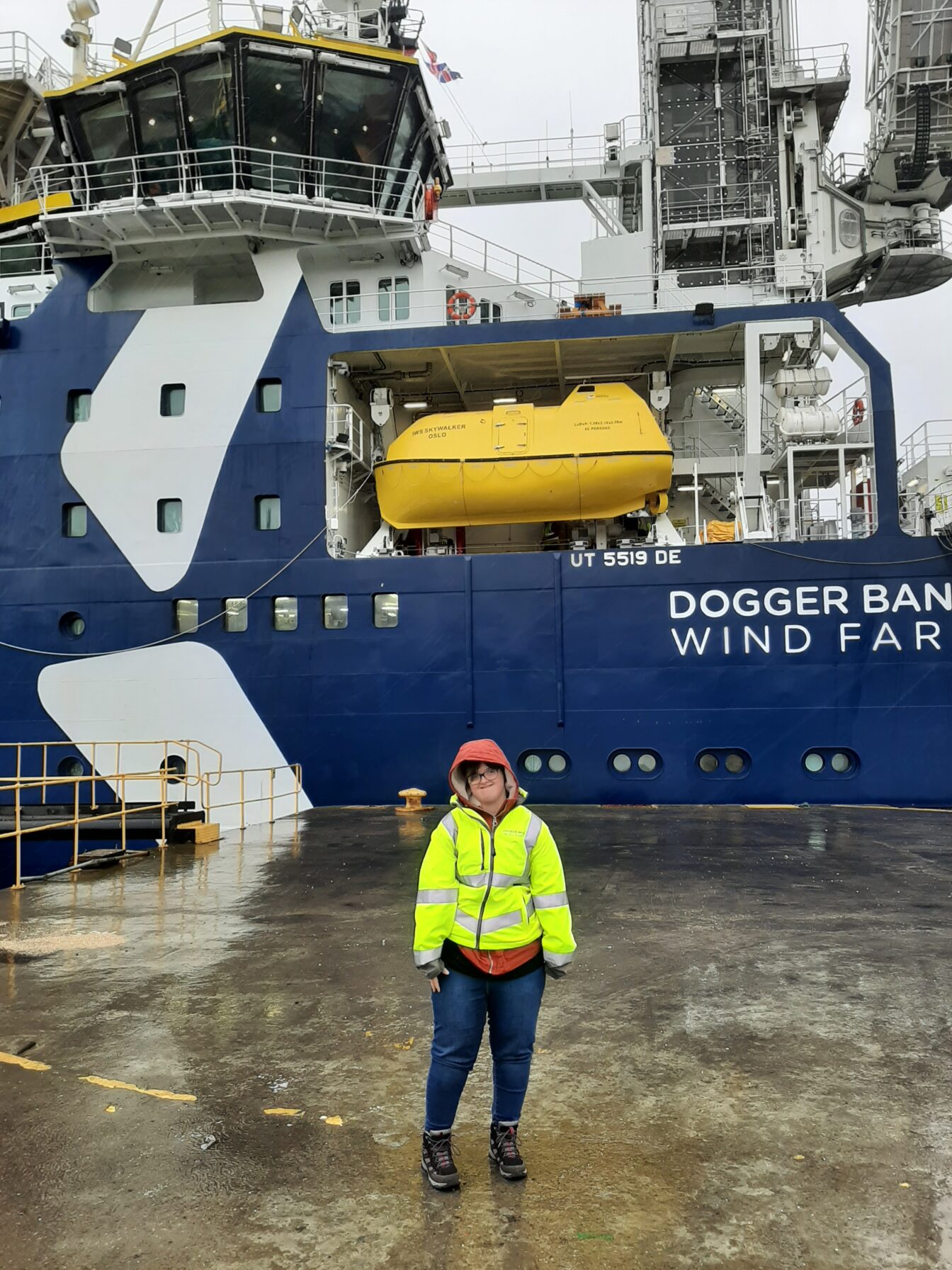20th December 2024 in Community News

- Dogger Bank Wind Farm and Sofia Offshore Wind Farm extend support for North Sea Conservation, the charity behind the Whitby Lobster Hatchery
- Further financial commitment from the two wind farm projects will support the education and conservation project’s long-term sustainability
Dogger Bank wind Farm and RWE’s Sofia Offshore Wind Farm have committed to increasing and extending their support for the North Sea Conservation charity with a new £50,000 donation paid jointly by the two wind farms.
North Sea Conservation operates Whitby Lobster Hatchery, a project that is currently in the process of releasing 100,000 juvenile lobsters into the North Sea. The project is committed to ensuring the seas are sustainable and rich in diversity for years to come, providing invaluable stocks of crustaceans for the local fishing industry, thereby safeguarding the region’s primary economy while improving marine biodiversity.
This latest sponsorship will provide new premises for North Sea Conservation, including research space, which will enable the development of future projects, including an improvement in research potential.
Support from the wind farm projects goes directly towards the work of the Whitby Lobster Hatchery helping the project to deliver on its key aims of conservation, education and research.
Whitby Lobster Hatchery General Manager, Joe Redfern, said:
“We have always had high ambitions for the impact our project can have on the marine environment. The support we have received from both offshore projects has been a huge help in starting to realise those ambitions. We are really grateful for their support and are glad to be working with them into the future.”
As well as helping with the hatchery equipment, the support from the two offshore wind farms will assist the charity’s ambitious endeavours to release 100,000 lobsters each year. By rearing lobster larvae in the hatchery, the charity will dramatically boost the lobsters’ chance of survival. The conservation charity has high ambitions to ensure the protection and conservation of lobster populations in the region and help ensure the future of our fishing fleets.
Dogger Bank Wind Farm Lead Offshore Consents Manager, Elizabeth Reynolds, said:
“It’s been our great privilege to see this education and conservation project grow since we started working with them a number of years ago.
“The organisation is already achieving impressive results for both its work releasing juvenile lobsters, and its local engagement and educational outreach. This further investment aims to help the organisation to secure its long-term growth and sustainability and builds on the legacy we’ve created through investment in our key communities.”
Matthew Swanwick, Sofia’s Project Director, said:
“Each year, wind farm projects operated by RWE invest more than £5million into community funds. Our approach is holistic and inclusive. We provide funding which enhances community services, boosts tourism, creates training grants for young people with the support offered both holistic and inclusive.
“One of our key priorities of our Sofia project development fund is to support sustainability and promote responsible stewardship of the environment. We see enormous value in the work of the Whitby Lobster Hatchery and are proud to be one of their sponsors.”
Both wind farms are located on the Dogger Bank area of seabed, more than 80 miles off the Yorkshire coast, with their export cables coming ashore on Teesside. Sofia is owned by RWE and Dogger Bank Wind Farm is a joint venture between SSE Renewables, Equinor and Vårgrønn.
10th December 2024 in Community News

Can imagination change the world? We think so! Take part in the Making Waves challenge.
Got a child at school here or know a teacher in the area? See if they want to get involved in the annual design challenge by Little Inventors – a programme create by Dogger Bank Wind Farm and South Tyneside Council.
Running across Key Stages 1 – 3, the challenge involves workshops and invention to come up with ideas to tackle real issues in the world.
This year the theme is Making Waves – and the best ideas will be made into real prototypes by local makers.
Last year one of the winning designs was nominated for a Best Invention award by the Engineer Magazine – at the age of 10! So well worth getting involved.
Upload your ideas by the 30th April 2025!
Click here to get involved today
18th November 2024 in Community News, Construction

- Second Dogger Bank Wind Farm archaeology lecture to take place in Woodmansey, East Riding of Yorkshire.
- New online exhibition to give public access to historical finds in their local area.
- Artefacts uncovered include Anglo-Saxon, Roman, Iron Age and Bronze age remains.
Local residents are invited to attend a detailed lecture about the archaeological excavations and discoveries unearthed during the construction of Dogger Bank Wind Farm’s onshore cable route.
Taking place on Monday 25 November at Woodmansey Village Hall from 6-8pm, this event offers the community a chance to learn about the history of Holderness and shares insight into how new infrastructure projects can lead to unexpected glimpses into ancient times and lives.
Led by archaeologists Rebecca Jarosz-Blackburn and Matt Walker from AOC Archaeology Group, the lecture will delve into a range of finds unearthed along the 30km corridor that houses the underground cables transmitting renewable energy from the North Sea to the wind farm’s two onshore convertor stations off the A1079 near Beverley. The free event is open to all and will conclude with a Q&A session.
The lecture will cover:
- An overview of archaeology in Holderness and what archaeological results can tell us about those who lived here
- How archaeology is excavated and recorded and what archaeological works were undertaken during the construction of Dogger Bank Wind Farm
- Significant discoveries, including an Iron Age Roman settlement uncovered near Leven and an early medieval surprise of an Anglo-Saxon long hall structure between Beeford and Skipsea
Dogger Bank Wind Farm has commissioned the production of replica artefacts found during the construction of the cable route. Created using a technique known as photogrammetry, the replicas are hand-painted and 3D printed to accurately recreate the look and feel of the very artefacts found during excavations. These artefact reproductions will be used by local schools for education purposes and include replicas of a 6,000-year-old Neolithic flint arrowhead, an Iron Age or Anglo-Saxon glass bead, an Iron Age to Roman bone comb and pottery fragments likely to date back more than 2,000 years.
For budding archaeologists these replica artefacts will be available to handle before the lecture from 5.30pm until 6pm in a special drop-in session for anyone aged over 6 years. The replicas will also be able to view and handle following the talk and presentation.
Community Engagement Manager for Dogger Bank Wind Farm, Rachel Palmer, said:
“Safeguarding historical evidence has been a critical part of our preparation work on Dogger Bank Wind Farm. We’re delighted we’re now able to share these exciting findings with the people who live in the towns and villages where this work was undertaken.
“This second public event coincides with the launch of our online exhibition, giving the public first-hand access to this treasure trove of historical findings. It’s our great privilege to be able to finally share our findings and answer some of the previously unknown questions about life in Holderness long ago. ”
AOC Archaeology Group is one of the most experienced heritage companies in Britain and was contracted by Dogger Bank Wind Farm as specialist archaeologists. Their analysis has been supported by a wide team of artefact and period specialists.
An online exhibition detailing historical finds from the construction of Dogger Bank Wind Farm can be accessed by visiting www.doggerbank.com/archaeology. The online exhibition features an interactive map to explore 22 excavated sites alongside a wealth of information about AOC’s work in the East Riding of Yorkshire.
Project Manager for AOC Archaeology, Rebecca Jarosz- Blackburn, said:
“Archaeology is all around us and it’s important that when we build for the future, we ensure our past is protected. I’m really looking forward to sharing what we found during Dogger Bank construction by both meeting the community at Woodmansey and showcasing our discoveries and finds online.
“I hope our online archaeological exhibition and the option to zoom in and see exactly where discoveries were made brings East Riding’s rich history to life. There are more artefacts that we are still analysing and as our understanding becomes clearer, adding to our online exhibition means we will be able to share these with a wider audience.”
Woodmansey Village Hall was chosen for this event due to its proximity to the wind farm’s convertor stations near Beverley. The event is supported by Woodmansey Parish Council and Woodmansey Village Hall.
AOC Project Manager Matt Walker, who grew up in East Yorkshire, also has a local connection to the Dogger Bank project. He said:
“At Dogger Bank, one of our main research aims was to try and narrow the current date ranges for handmade prehistoric and Roman pottery in the region by using radiocarbon dating.
“It is the scale of this project across the region, coupled with funding for radiocarbon dates, that gives us a really meaningful opportunity to add to this research theme and advance our understanding of Holderness thousands of years ago.”
“What we discovered during the archaeological investigations for Dogger Bank offers a deep insight into communities who lived in Holderness many centuries ago and, as a person proud to call this area my home, this feels very special to me.”
AOC and Dogger Bank Wind Farm are currently considering options for permanently locating the original artefacts once they’ve been fully analysed, with a preference to find a home close to where they were unearthed.
Set to be the world’s largest offshore wind farm once complete, Dogger Bank is situated over 130km from the Yorkshire coast and will produce enough renewable energy to supply electricity to six million homes in the UK annually. The wind farm, a joint venture between SSE Renewables, Equinor, and Vårgrønn, produced first power in October 2023.
The first two phases of the wind farm will transmit renewable energy into the national electricity network via the Creyke Beck substation near Beverley, close to the site where the project has built two onshore convertor stations over the last four years.
10th October 2024 in Community News

A 16-year-old schoolgirl from Redcar got the chance to sample life on an offshore construction support vessel, after winning a competition with Dogger Bank Wind Farm.
KTS Academy pupil, Samantha Donoghue, was welcomed on board the Skywalker vessel by its multi-national crew, and was given a VIP tour of its state-of-the-art facilities.
Samantha was invited to visit the vessel after winning the Dogger Bank Wind Farm World Book Day competition earlier this year. The 500-word challenge to create an energy-themed superhero story, was launched in March.
The competition was part of the Dogger Bank Wind Farm-funded Building our Futures programme, which aims to embed STEM careers education into every primary school in Redcar and Cleveland, through engaging workshops supported by local employers.
The programme is delivered by Redcar and Cleveland Voluntary Development Agency (RCVDA) with strategic support and guidance from Redcar and Cleveland Borough Council.
A panel of judges selected Samantha’s Ice Man poem as the winning entry, and the KTS pupil was treated to a behind-the-scenes tour of a vessel supporting the construction of the world’s largest offshore windfarm.
As part of her tour, Samantha was invited by the ship’s captain to visit the vessel’s bridge and sit in his seat, before enjoying a lunch with some of the crew in the on-board restaurant.
Samantha said:
“I enjoyed myself and liked learning about the different type of jobs on the Skywalker. It was exciting and the staff were helpful and funny.
“It was interesting to learn about career opportunities on the Skywalker for young people in our area. The staff were really kind and welcoming, it was a fantastic day out for us.”
Building Our Futures programme manager, Jacqui Hutchinson of the Redcar and Cleveland Voluntary Development Agency, said:
“I was thrilled with the number of entries to our first Building our Futures Creative Writing competition, and Sammi’s story of Iceman and the penguins, captured all the judges’ hearts whilst fulfilling the brief exactly.
“The prize of a visit to the Skywalker highlights the importance of real employer engagements and workplace visits for all young people, and is at the heart of Building our Futures”
Sam Smith, class teacher at KTS Academy, said:
“Samantha has really enjoyed participating in the Building our Futures programme within school and learning about where we get different types of energy from and how we use it.
“Samantha created her Iceman superhero story after learning about how some types of energy impact the environment and animal habitats. We are really proud that Samantha’s story has been awarded first prize!”
Rachel Lawrence, Community Engagement Manager for Dogger Bank Wind Farm, said:
“It was a real privilege to welcome Samantha onto our fantastic Skywalker vessel at Teesport, and introduce her to the people behind the construction of the world’s largest offshore wind farm.
“Samantha treated us to a fantastic recital of her Ice Man poem and had some interesting questions for the team about life on board the Skywalker.
“Huge congratulations to Samantha for being selected as our competition winner. We can’t wait to see where her writing takes her next.”
Set to be the world’s largest offshore wind farm once complete, Dogger Bank is situated over 130km from the Yorkshire coast and will produce enough renewable energy to supply electricity to six million homes in the UK annually. The wind farm is a joint venture between SSE Renewables, Equinor, and Vårgrønn.
The project’s IWS Skywalker vessel is one of a fleet of state-of-the-art construction support vessels in operation in the North Sea. The boat returns to ports in the Tees Valley on a fortnightly basis for crew change, before returning to the field.
The Norwegian vessel can accommodate more than 100 passengers and has a sauna, a gym and games room, as well as onboard office and conference facilities.
The onboard team is made up of representatives from Dogger Bank Wind Farm and a large number of its supply chain companies. The vessel is currently supporting the commissioning of offshore assets.
4th October 2024 in Community News

We are delighted to announce that Emily Hamilton has been awarded the Dogger Bank purchase prize award for five of her artwork pieces from her final year degree show.
Emily said on winning the prize, “I am so happy that my work was selected for this award. It was a perfect ending to my degree and a promising start to my career as an artist.”
I love seeing my paintings alongside so many amazing works from past students, and I hope my paintings bring a smile to the people who work at Dogger Bank”.
Born in Bishop Auckland, Emily creates ‘dream-like worlds’ within her art that explore the feeling of living in a fake reality, the belief you are the only person who exists, nothing is real and nobody else can prove you are conscious.

Emily’s winning pieces focus on the medieval character of the Jester; a silly unserious character, with the ability to have political influence in the royal court. The Jesters show the cruelties of war, and how in this alternate reality, each side’s differences result in the end of the world.
Mark Halliday, Dogger Bank Operations Director, said:
“We’re proud to support local artists through our purchase prize award. Emily’s artwork is a fantastic addition to our world-class operations base, where it adds a touch of creativity for our team members and visitors to see. At Dogger Bank Wind Farm, we are committed to giving back to the communities where we operate, investing in local initiatives and supporting the development of local talent.”
Dogger Bank Wind Farm is working with Newcastle art gallery Gallagher and Turner on the purchase prize, with a planned yearly purchase prize for art students at Newcastle and Sunderland Universities. Selected works will be displayed at the Wind Farm’s Operations and Maintenance base.
Professor Kevin Petrie, Professor of Creative Practice at the University of Sunderland, said:
“It’s wonderful for the University of Sunderland to be a part of the Dogger Bank Purchase prize as it aims to enhance the working environment of those involved in a really important project for sustainability and the environment. This is central to our curriculum in Media and Creative Industry subjects where our students are using their creativity to make the World a better place. In Emily’s case, she is creating pieces that will intrigue and delight those who see the pieces on display. This prize is also an important career boost for those like Emily who are setting up in business as creatives.”
Over 30 pieces of art from North East artists, supplied by Gallagher and Turner, are already permanently displayed at the operations and maintenance base.
Clare Turner, Partner, Gallagher & Turner said:
“It’s been an important part of Gallagher & Turner’s process to work with Dogger Bank O&M Base employees to establish a connection with the artworks selected, curating works that they like. After consulting with the team we wanted to represent intergenerational talent from across the North East. The Dogger Bank Purchase Prize is selected by Dogger Bank Employees, and has been a great way to showcase and support exciting new art graduates within this evolving collection.”
In 2024, three original murals were installed at the base, all featuring original designs by local primary school children, in a collaboration between Gallagher and Turner, South Tyneside Council, and The Foundation Press.
In June, Dogger Bank Wind Farm announced additional funding of £25 million to support coastal communities across the North and North East of England, over its planned 35-year operational lifespan.
This commitment includes funding projects that enhance STEM education to help young people gain the skills and knowledge required to fulfil their potential in a net zero world.
The new community fund builds on the £1 million community fund set up during the construction phase of Dogger Bank, which has already supported more than 36,000 young people across 204 schools, provided 62 university scholarships, and provided 87 grants to local community groups.
Find out more about this £25 million commitment from Dogger Bank Wind Farm here.
Dogger Bank Wind Farm is a joint venture between SSE Renewables (40%), Equinor (40%) and Vårgrønn (20%). SSE Renewables is lead operator for the development and construction of Dogger Bank Wind Farm. Equinor will be lead operator of the wind farm on completion for its expected operational life of around 35 years. Vårgrønn (controlled by ENI) provides specialist offshore wind expertise to the project.






